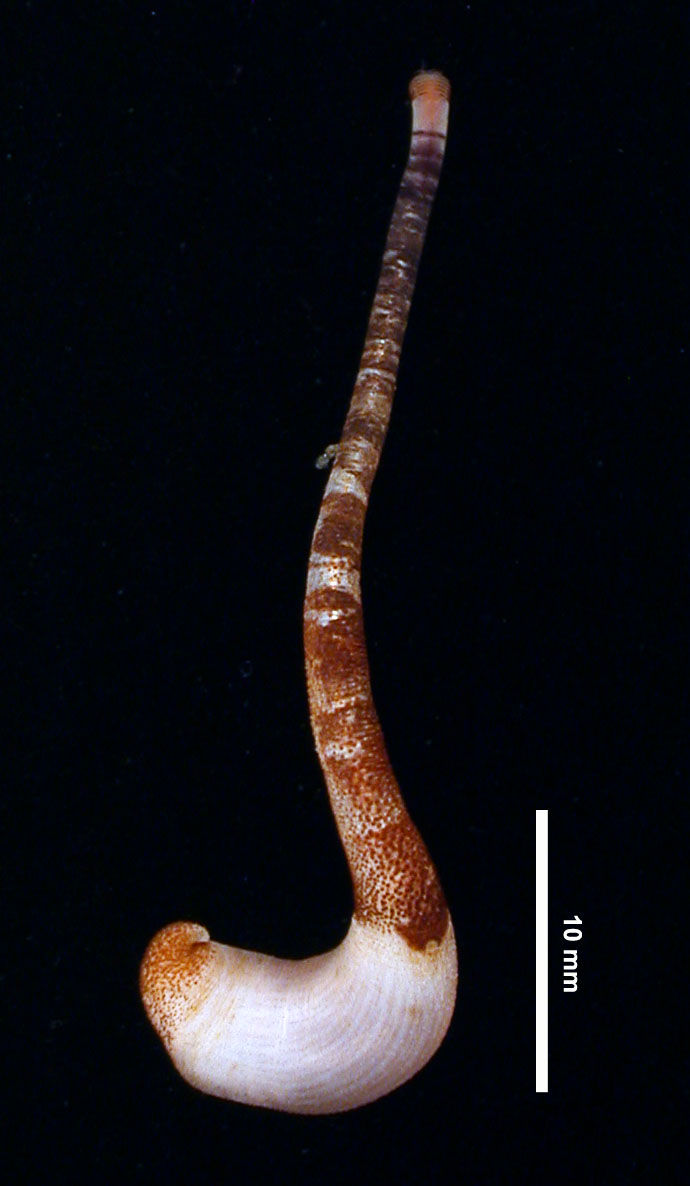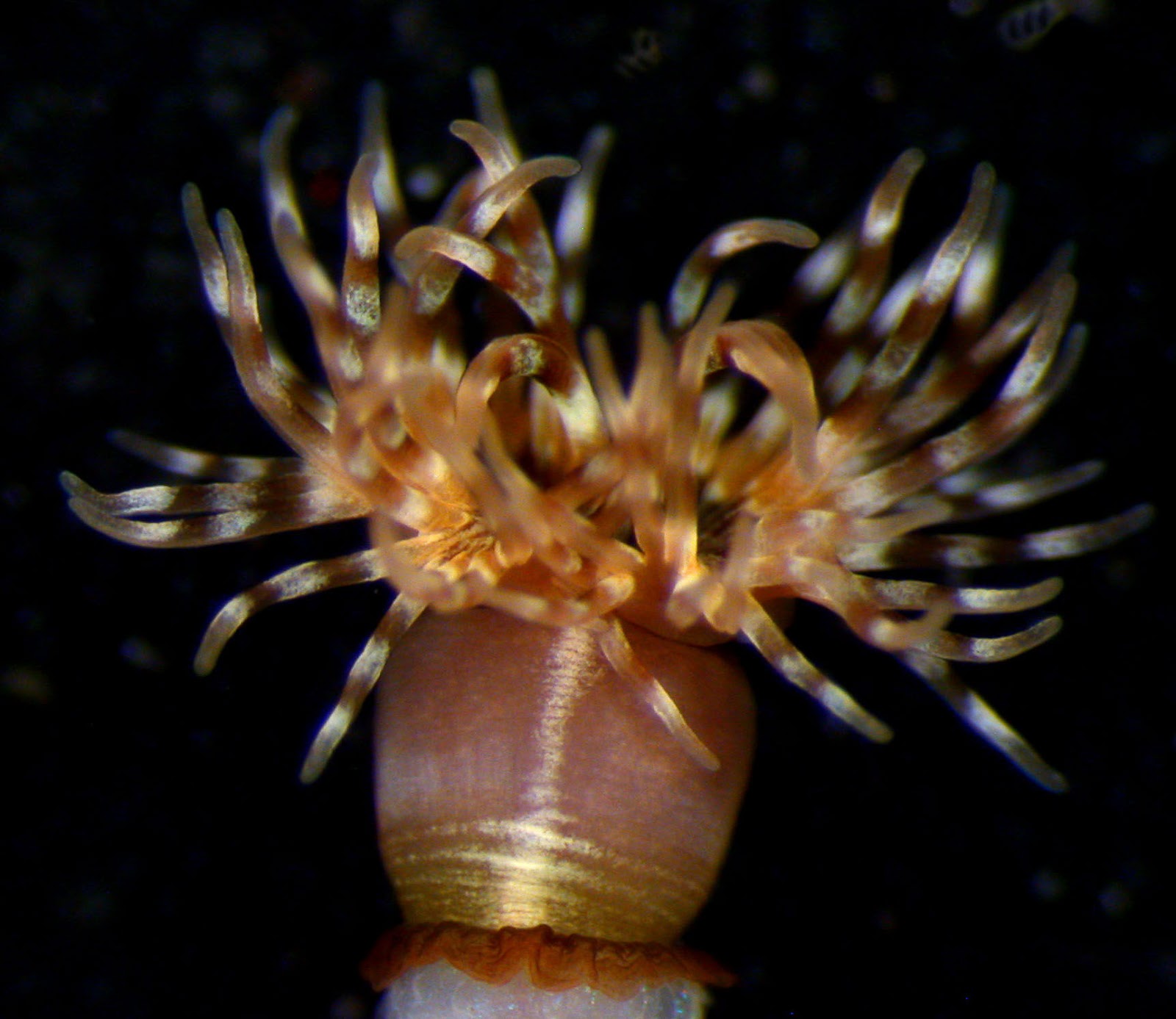 |
| Image: Kawauchi, Gisele Y |
Peanut Worms are some 350 species of marine worm found mostly in shallow waters around the world. They're usually placed in their very own phylum, known as Sipuncula.
Most Sipunculans burrow through soft sediment in classic worm style. Some can't be bothered with that kind of work and just hang out in rocky crevices or abandoned shells. A few scoff at that kind of laziness, they refuse to wait around and just bore into rock instead. No-one's quite sure how they do it but it's nice to see that kind of proactive attitude in a worm. Or indeed, a peanut.
 |
| Image: Kawauchi, Gisele Y. One species, many guises |
They don't really have a shell, though. In fact, Peanut Worms are entirely defenceless, so they really have to keep themselves underground or hidden away some place safe if they are to have any chance of survival.
Phew! After all that work, it's time to eat. Let the nastiness commence!
Video: Alvaro E. Migotto
The body of a Peanut Worm is called the trunk and represents only about half of its total length. The rest is called the introvert.
It's a long, retractable tube that can be unfurled from the trunk and has the mouth at its end. Sipuncula means "little tube"... I guess it refers to the introvert but it doesn't look so little to me!
The introvert is very flexible and, like a lot of us introverts, sensitive, often covered in small spikes and always topped by a mass of tentacles.
 |
| Image: Kawauchi, Gisele Y. S-T-R-E-T-C-H! Until you look like the first half of a gastrointestinal tract |
Some Peanut Worms do most of their feeding as they burrow. They swallow the sediment as they carve their way through it, and digest whatever good stuff happens to be in each mouthful. There are also carnivores. Most of them eat teensy things, but at least one uses its introvert to bore into worms and consume their innards.
Erk!
 |
| Image: Moorea Biocode |
This is great for discarding their poo without having to completely vacate the safety of their shelter. Personally, I can't help but imagine Peanut Worms burrowing through the seabed and rising to the surface to release a gust of faeces into the water, like an underground worm-whale. I don't know if they actually do that, but sometimes imagination is way more fun than reality.
Aside from that, Peanut Worms are rather lacking in the Internal Organ Department. They have a small bundle of nerves which serves as a brain, but they have no circulatory or respiratory systems. They do have a body cavity, known as a coelem, which is more than can be said for a lot of creatures that get called "worms". Thus, what organs they have, such as the digestive system and reproductive organs, are simply bathed in watery liquid called coelemic fluid.
This fluid is full of all sorts of cells and stuff for carrying oxygen around. One of the weirdest ones are little structures known as urns. These things are armed with cilia and are attached to the inner wall of the coelem, where they gather up waste products for other organs to properly dispose off. However, in some species they also detach and scoot around in the coelem, looking for any waste that needs taking care of. They also attack any pathogens they bump into by trapping them in sticky mucus.
I always love this kind of stuff! I like to imagine the human blood system as an annoyingly shaped pond and white blood cells as hungry amoebas who've been given a "Do Not Eat" list. If it ain't on the list, it's all yours.
 |
| Image: Kawauchi, Gisele Y. |
Eggs may develop straight into miniature adults, but some hatch into a peculiar kind of larva known as a trochophore. It's a tiny, little thing that looks a bit like a featureless blob, except that it has a lot of features.
It'll be armed with at least two bands of cilia to help it swim around and possibly to catch its own food. Interestingly, Peanut Worms are just one of several animal groups that at least sometimes have a trochophore stage. The most well-known of the others are molluscs and annelids.
The trochophore may then develop into an adult after something between a day and a month, presumably depending on how well they can find their own food. Alternatively, for some species the trochophore develops into a whole new larva called a pelagosphaera. This is yet another swimming stage, again waving its cilia to get around. This time it can feed itself quite well and it has something you could actually call a head, which can be retracted into a trunk region when disturbed.
The trochophore larva is part of why Peanut Worms were initially thought to be a strange kind of annelid. A VERY strange annelid! An annelid completely lacking the circulatory system, segmentation and bristles that other annelids have. Even earthworms have tiny bristles on each segment.
Peanut Worms are now usually considered their own phylum, but DNA analysis shows they certainly are closely related to annelids.
 |
| Image: Kawauchi, Gisele Y. |
Some have suggested they may be Peanut Worms! Hyoliths are known to have had a looping gut, not unlike Sipunculans. Also, some Peanut Worms have what's known as an anal shield, a kind of hard bit near their anus, which is, don't forget, not as far away from their head as it's supposed to be. Some think that maybe, just maybe, the anal shield is the last remnant of a once all-encompassing conical shell that even had a lid.
The mystery continues...

7 comments:
little stomachs that stretch. eek!
Sounds pretty good Christmas and other seasons of overindulgence!
Maybe they WERE organs!
Perhaps we just need an octopus to assemble them all Voltron-style?
But squishier?
I sometimes think at least some of those old myths are true, the ones where a god killed another god and they made the world out of his skull and his blood turned into the rivers or whatever.
There are so many sea creatures that look like organs!
Now you have another themed article for your 'if I get really bored' list! :)
Also. . . best toy line EVER.
I could sure go for a peanut worm butter and jellyfish sandwich right about now...
@Lear's Fool: Very true on both counts!
@Crunchy: How would you milk a Peanut Worm, anyway? Either way, it sounds great if your a weirdo or a fish!
Post a Comment